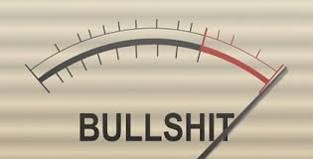I recently gave a presentation entitled “Discover The Leader In You! Nine Critical Leadership Success Actions” at the Spring Conference of PRSA Counselors Academy, the organization’s section for senior PR counselors. It was based on an article I penned for The PR Strategist, based on interviews with nine (?) PR professionals, respected for their leadership skills. Here’s Part One:
What’s Your Job?
When I ask this of PR professionals, even senior level ones, I get answers related to the management of the business: Managing the process. Managing the campaign. Managing social and digital. Managing the budget. Getting the train out of the station on time.
I think they miss the point. Those are elements of management, but not leadership. And while those are important, leaders’ most important jobs and related titles include: 1) Inspirer-In-Chief; 2) Chief Cheerleader; 3) President Of “I Believe In You”; 4) The Enforcers, of the brand and its highest quality standards (okay, that one might touch on management); 5) The Captain, getting the ship and the crew through the toughest waters to the safe port in the distance.
Specifically, managers manage things, execute processes, supervise teams, achieve goals, bring the leader’s vision to life, guide projects, get the right people for the job, manage tactics and plans, and make things happen.
Leaders, on the other hand, lead people, create processes, supervise teams of leaders, articulate the goals, create the vision, inspire followers, motivate the team, create strategies, and make the really important things happen.
Remember, leadership is a two-part choice-Your conscious decision to lead. And your followers’ conscious decision to follow you. Or not!
Ask Yourself These Questions
Now that you’re thinking about the differences between management and leadership, ask yourself these two questions: 1) Are you truly a leader? 2) How would you team grade you as a leader and communicator?
The First Critical Action That Drives Leadership Success: Articulate the Values
People follow a leader when they feel alignment between their own values and the organization’s. As such, they must completely understand those values. So think about and articulate the fundamental beliefs defining who you are, what you do, and what’s most important to your organization.
Know that your potential followers have a finely-honed meter when it comes to organizational values, particularly if the values you espouse and the values they experience each day are out of whack. In other words, their “BS Detectors” are set to high!
So make sure the values you state are the values they experience on a daily basis in your organization.
Then, take every possible opportunity to repeat and reinforce these values: In meetings, memos, on the company blog, and in hallway conversations.
Do remember that what you do trumps what you say. Every time.
And know that this is no mere exercise. In the words of Tom Coyne, CEO of his eponymous public relations agency, his values truly guide his actions: “My mission statement…gets me to do the right thing, every day.”
In Part Two, I’ll cover the next critical actions for leadership success. In the meantime, please leave me a comment regarding the critical actions you take consistently to drive leadership success.
This blog was first Published on Jacobs Executive Coaching in August 2016.



